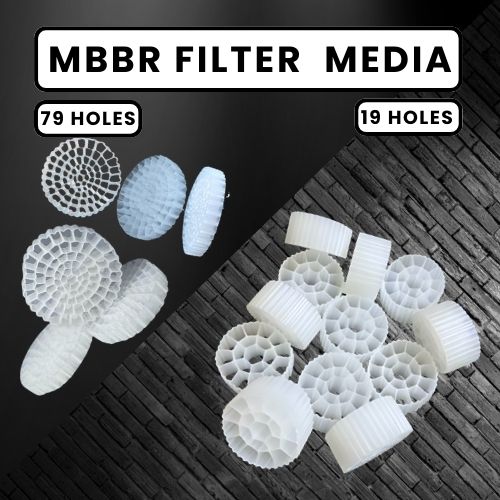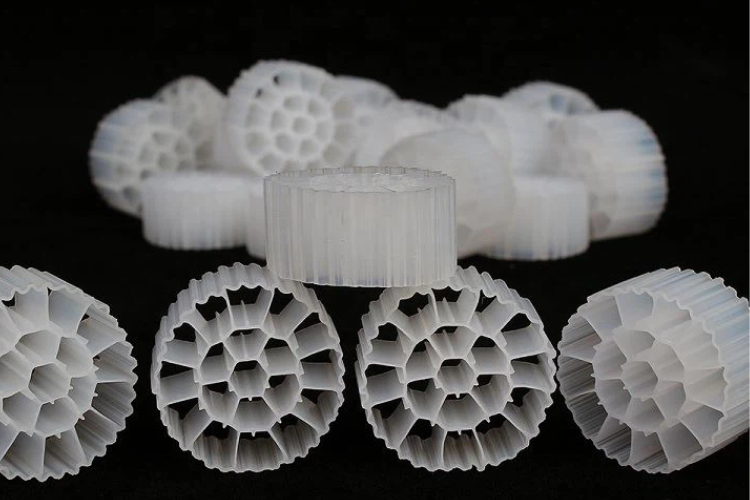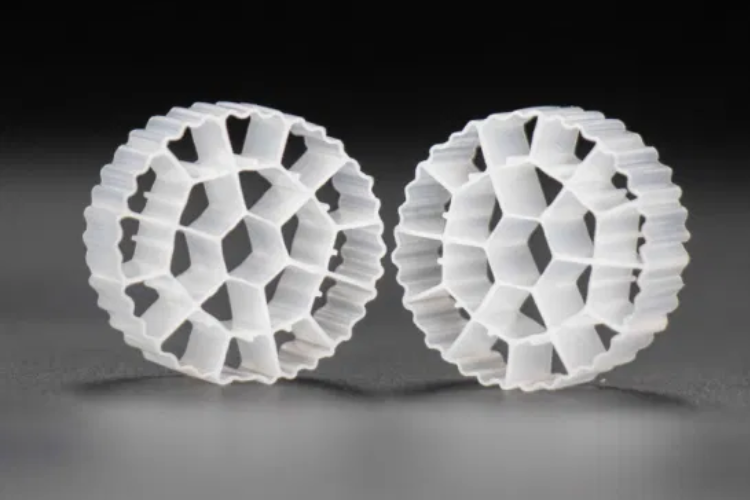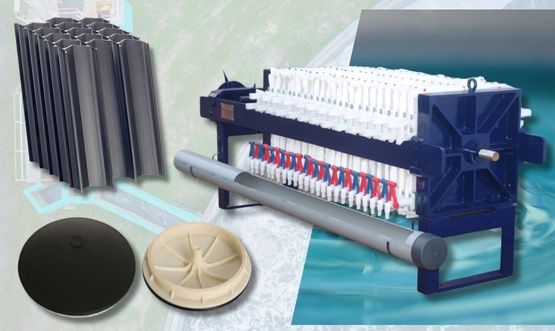Contact Us

+91 81096 09900

MBBR Filter Media

12 x 25 mm & 4x25 mm
19 & 79
>6OO m²/m³ & >16OO m²/m³
0.94 - 0.96 gm/cm³
15% to 65%
3-15 Days
VIRGIN HDPE
MBBR Filter Media: A Reliable Solution for Modern Wastewater Treatment
In wastewater treatment, efficiency and simplicity are essential. Whether you’re dealing with sewage from a residential building or industrial effluent from a factory, the process of treating dirty water must be reliable, cost-effective, and easy to maintain. That’s where MBBR Filter Media comes in.
MBBR stands for Moving Bed Biofilm Reactor. It’s a proven biological wastewater treatment technology that uses specially designed plastic media to grow helpful bacteria. These bacteria digest organic waste and harmful substances in the water. The media moves freely in aeration tanks, allowing the biofilm to do its job without complicated equipment.
This article will walk you through everything you need to know about MBBR Filter Media: how it works, why it’s effective, what types exist, and how it can be a great fit for your wastewater treatment system.

What is MBBR Filter Media?
MBBR Filter Media is small, lightweight, and specially shaped plastic pieces. These pieces float and move continuously inside an aeration tank. The media offers a large surface area for bacteria (also called biofilm) to grow. These bacteria feed on the organic matter and other pollutants in the water, making it cleaner.
The real benefit of MBBR lies in its simplicity. There’s no need for return sludge systems or constant monitoring of bacterial levels. The bacteria grow and fall off the media naturally as needed. This makes the system self-regulating and low-maintenance.
MBBR Filter Media is used widely in both industrial and municipal wastewater treatment plants, especially in situations where space, efficiency, and reliability are important.
How Does MBBR Media Work in Water Treatment?
The MBBR process begins with the media being placed in an aeration tank or bioreactor. Air is continuously supplied to keep the media in motion. As the media tumbles through the wastewater, biofilm forms on its surface.
This biofilm is made of beneficial bacteria that feed on the organic pollutants in the water. As water passes through the tank, these bacteria break down substances like BOD (biochemical oxygen demand), COD (chemical oxygen demand), and ammonia.
Over time, the biofilm gets thick. Some of it naturally sloughs off, making space for new bacterial growth. This cycle keeps the system balanced without requiring complicated controls. The treated water then moves to a clarification stage, where solids settle out, leaving clean water ready for discharge or reuse.
What Our Clients Say About Us
PP Filter Press
Vasu’s PP Filter Press gave us consistent output with zero downtime. Quality is better than other vendors.

Sanjay Patel
MBBR Media
We switched to Vasu’s MBBR Media in our ETP plant. Biofilm grew faster and media remained stable under load.

Neeraj Saini
Tube Deck Media
Tube Deck Media from Vasu reduced our settling time and sludge issues. Good performance in compact STPs.

Pooja Trivedi
Coarse Bubble Diffuser
Coarse Bubble Diffuser gave even air distribution. Setup was quick and it’s been running well for over a year.

Manish Goyal
Fine Bubble Diffusers
We installed Fine Disc Diffusers in our plant. Noticed better oxygen levels and lower energy use immediately.

Anisha Roy
Tube Settler Media
We trust Vasu for Tube Settler Media. The material quality is great and works efficiently even in high TSS.

Nisha Bhandari
PP Filter Press
We’ve been using PP Filter Press from Vasu for 2+ years. Strong build, smooth performance, and zero leakage issues.

Ramesh Verma
MBBR Media
Vasu’s MBBR Media helped improve our STP output quickly. No clogging, fast biofilm growth, and great durability.

Ankit Sharma
Tube Deck Media
After installing their Tube Deck Media, settling improved instantly. Easy to handle and works well in clarifiers.

Meena Desai
Types of MBBR Filter Media
Different systems need different types of media depending on flow rate, load conditions, and space. Here are some common types of MBBR Filter Media:
| Type | Surface Area (m²/m³) | Material | Size (mm) | Common Use |
|---|---|---|---|---|
| K1 Media | 500–600 | Virgin HDPE | 10 x 7 | STP, ETP, Compact Systems |
| K3 Media | 800–900 | Virgin HDPE | 12 x 9 | High-load STPs, Industrial Effluent |
| Tube Pac Media | 150–200 | PVC | Custom | Clarifiers, Settlers |
| Bio Pac Media | 350–400 | Polypropylene | Custom | Trickling Filters, Anaerobic Systems |
The media material is typically virgin HDPE or polypropylene. These plastics are durable, resistant to chemicals, and have a long life in water environments. The key feature to look at is the surface area. Higher surface area allows for more bacteria to grow, increasing the treatment capacity of the system.
Applications of MBBR Filter Media
MBBR Filter Media is used across many sectors. Its ability to handle varying loads and tough conditions makes it suitable for:
- Municipal Sewage Treatment Plants (STPs)
- Industrial Effluent Treatment Plants (ETPs)
- Residential housing societies
- Hotels and hospitals
- Educational institutions
- Commercial buildings
- Food and beverage processing
- Pharmaceutical manufacturing
Whether you’re dealing with domestic sewage or strong industrial waste, MBBR technology can be adapted to meet the requirement. It is also commonly used as an upgrade for existing underperforming systems.
Advantages of MBBR Media in STP and ETP Systems
- Compact Design: Because the media increases biological activity, you need less tank volume to treat the same amount of water. This is especially helpful in cities where space is limited.
- Simple Operation: MBBR systems don’t require return sludge pumps, sludge recirculation, or frequent manual adjustments.
- Handles Load Fluctuations: Whether you’re treating low flow one day and high flow the next, MBBR media adapts quickly.
- Low Energy Consumption: With no need for complex control systems or return lines, energy use is lower than many traditional methods.
- Easy to Scale: Want to increase treatment capacity? Just add more media to the same tank.
- Self-cleaning: The constant movement of the media helps prevent clogging and eliminates the need for manual cleaning.
- Durability: Good-quality MBBR media lasts for 10 years or more.

How MBBR Solves Common Wastewater Treatment Challenges
Many plants struggle with maintaining consistent performance. Traditional systems often break down under load changes or require frequent maintenance. Let’s look at some common problems and how MBBR solves them:
- Problem: High BOD/COD Levels Solution: The large surface area of MBBR media supports more bacterial activity, breaking down BOD and COD more effectively.
- Problem: Lack of Space Solution: MBBR’s high efficiency allows for smaller tanks.
- Problem: Clogging in Fixed Film Systems Solution: The moving nature of the media prevents clogging.
- Problem: Complex Operation in Conventional ASP Systems Solution: MBBR is much simpler to manage and automate.
- Problem: Inconsistent Flow or Load Solution: The biofilm adapts quickly, making the system stable even during fluctuations.
Design Considerations for MBBR Systems
Before installing MBBR media in your STP or ETP, a few important design points should be considered:
Media Fill Ratio: Typically, 30% to 70% of the tank volume is filled with media. More isn’t always better.
Aeration System: Proper air distribution is essential. The media must move continuously for optimal performance.
Retention Time: Ensure the wastewater stays in the tank long enough for bacteria to work effectively.
Screens and Retainers: These prevent media from escaping the tank during flow.
Start-up Time: Although faster than traditional systems, MBBR still takes a few weeks to develop an effective biofilm.
Maintenance and Performance Tips

While MBBR systems are low-maintenance, regular checks help keep things running smoothly:
Inspect media condition every few months
Ensure aeration is even and sufficient
Avoid chemical shock that can kill biofilm
Monitor water quality parameters like BOD, COD, and ammonia regularly
If you notice a drop in treatment performance, check for aeration issues or overloading. Often, small adjustments solve the problem quickly.
.
How to Choose the Right MBBR Media Manufacturer
When it comes to setting up an efficient Moving Bed Biofilm Reactor (MBBR) system, selecting the right media is not just important—it’s absolutely critical. Not all MBBR media are created equal. Poor-quality media made from substandard plastic can pose serious challenges: it may sink prematurely, crack or break over time, and fail to provide the proper surface area required for biofilm growth. This can significantly reduce the system’s overall biological treatment efficiency.
To ensure optimal performance and long-lasting results, here’s what you should look for in high-quality MBBR media:
- Virgin HDPE Material (Not Recycled Plastic):
Always choose media made from virgin High-Density Polyethylene (HDPE). Recycled plastic often lacks the mechanical strength and consistency needed for continuous use in biological wastewater treatment. - High Surface Area:
A larger surface area means more room for biofilm to grow. This directly increases the system’s biological load capacity, enhancing the efficiency of the wastewater treatment process. - Proven Durability (10+ Years Lifespan):
Top-grade MBBR media should be designed to last over a decade without breaking down or deforming under operational stress. Durability ensures consistent performance and reduces replacement costs. - Technical Support & Setup Guidance:
A dependable manufacturer will not just sell you the product—they’ll also offer full support during system design, installation, and operation. This ensures you’re not left guessing about how to use the media effectively. - Custom Media Types for Specific Needs:
Different treatment setups may require different types or sizes of media. Whether it’s for industrial, municipal, or decentralized systems, the manufacturer should offer customized solutions tailored to your requirements.
Conclusion
MBBR Filter Media is a smart and practical solution for modern wastewater treatment. It brings together biological efficiency and simple engineering in a way that solves many of the common problems faced by treatment plants today. With its flexibility, reliability, and ability to function in a variety of load conditions, MBBR systems are becoming the preferred choice for new installations and upgrades alike.
When you invest in the right type and quality of MBBR media, you’re not just buying a product—you’re improving the overall performance of your plant. The media plays a vital role in the biological process, supporting the growth of active biomass and enabling it to function without interruptions.
Furthermore, when the system is properly designed and maintained, MBBR technology ensures consistent performance over the long term. It’s not only effective in treating wastewater but also in helping industries and municipalities meet ever-tightening environmental regulations. With less downtime, reduced operational burden, and dependable results, MBBR offers a path to smarter, more sustainable water management.
For any facility that wants to improve treatment efficiency, cut down on maintenance, and stay compliant with discharge norms, Moving Bed Biofilm Reactor systems are not just a possible alternative—they represent a proven opportunity for long-term success.
FAQ
MBBR filter media is used to treat wastewater in STPs and ETPs. It helps bacteria grow and break down harmful substances in the water, making it clean and safe to reuse or discharge.
Good quality MBBR media made from virgin HDPE can last for 10 to 15 years with minimal maintenance. It doesn’t wear out easily and keeps performing well for many years.
Yes, MBBR media is perfect for upgrading existing sewage treatment plants. It improves treatment performance without needing major changes to the setup.
No. MBBR systems are very low-maintenance. Just make sure the blower and aeration system are working properly, and the media will do the job naturally.
Yes. MBBR media works well in industries like pharmaceuticals, textiles, chemicals, and food processing. It handles high pollutant loads effectively.

About The Author
Lalit Nankani
Managing Partner, Vasu Pharmatech
Lalit Nankani has over 12 years of experience in the filtration and water treatment industry. He leads Vasu Pharmatech, a trusted name in making PP Filter Press Systems, MBBR Filter Media, and other filtration products.
Under his leadership, the company has delivered high-quality solutions to many industries like pharmaceuticals, chemicals, food and beverage, textiles, and wastewater treatment. Lalit believes in providing strong, easy-to-use, and cost-effective systems that help businesses clean and reuse water.
Reviews and Ratings
We certify that M/s. Vasu Pharmatech, located at 66B, Pocket AD Shalimar Bagh, Delhi-110088, supplied us with a Pharmatech filter press for our 275 KLD ETP plant at M/s. Asian Colour Coated Ispat Ltd. in Bawal, Dist: Rewari (Hr.). The plant was started in January 2018 and is still working well. The product and its performance have been satisfactory up to now.

ASIAN COLOUR COATED ISPAT LIMITED
MBBR Filter Media, mbbr media manufacturer, mbbr water treatment, mbbr media types, MBBR Filter Media in STP
MBBR Filter Media, mbbr media manufacturer, mbbr water treatment, mbbr media types, MBBR Filter Media in STP


